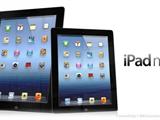Apple has just announced the end of the era of paid operating systems. Microsoft, are you afraid?
Apple Just Ended the Era of Paid Operating Systems
Note from the editor: The author of this article is RYAN TATE, originally published in Wired with some edits.
Apple's new product launch had plenty of highlights, but what caught my attention and surprised me the most was that Apple's latest operating system, OS X Mavericks, will be free for all models.
This move undoubtedly announces the end of the era of paid operating systems (OS).
Paid OS has been one of the main profit-making models in the tech industry for the past 16 years. Eighteen years ago, many leading companies in the technology sector earned nearly half of their profits from selling operating systems.
And Apple has just pronounced the end of the paid OS era.
The price of Apple’s own OS has been declining consistently. After the first four versions were priced at $129 each, Apple reduced the upgrade price of the new OS X 10.6 Snow Leopard to $29 in 2009, followed by a lower $19 for OS X 10.8 Mountain Lion. And now, it's completely free.
Why?
One possible reason is that the ecosystem of mobile devices has changed people's perception of operating systems. Whether it's smartphones or tablets, system upgrades have always been free; you only need to pay for certain premium software and hardware devices (iPad & iPhone). Google's Android works the same way. With the rise of mobile internet and the decline of the PC market, desktops and laptops naturally started moving towards the direction of mobile internet.
An OS was also one of Microsoft's primary profit-making models. Although they recently announced that regular consumers can upgrade to the latest Win 8.1 for free, Microsoft still charges hardware partners who collaborate with them. This differs significantly from Google, which provides its OS to hardware manufacturers without charging smartphone or tablet makers.
OS once accounted for 47% of Microsoft's overall profits, but last year it only made up 25%. As a countermeasure, Microsoft has decided to pivot towards becoming a "devices and services" company — meaning a company that sells both hardware like Xbox and network services like Azure. Simply put, it aims to become more like Apple. Because Apple isn't truly a software company; it runs its software and services on its own hardware.
Long-time observer of OS X, John Siracusa, stated: "The $0 price of Mavericks aligns with the trend of vertical integration. A company that can profit from both hardware and software can choose where to focus its main profits. Leaving an impression of 'free' in the minds of consumers allows all profits to concentrate on another aspect. Making hardware free is very difficult, so what becomes free is the software. Buy our hardware, our software is free!"
Microsoft is also moving in this direction, evidenced by its acquisition of Nokia. However, for Microsoft, it's very challenging to make the OS free and earn money through advertising on the OS while also selling hardware like Moto X — because it lags behind Apple in hardware and falls short compared to Google in software services.
Former Microsoft executive Joel Spolsky once said: "An OS has always seemed free, as it comes bundled with your computer when you buy it. But that doesn’t mean it isn’t a profit center. Perhaps only those who go to physical stores to buy the latest version of the OS to upgrade their old systems notice the price of Windows. I don’t think this profit model will be mainstream in the future. Many people only 'upgrade' their systems when they buy a new computer."
Therefore, although for ordinary consumers, Apple’s announcement of the end of the paid OS era may not feel like such a dramatic shift, for Microsoft shareholders, this move by Apple is quite alarming. It means that Microsoft needs to find new profit points to fill the 25% gap left by the OS.



